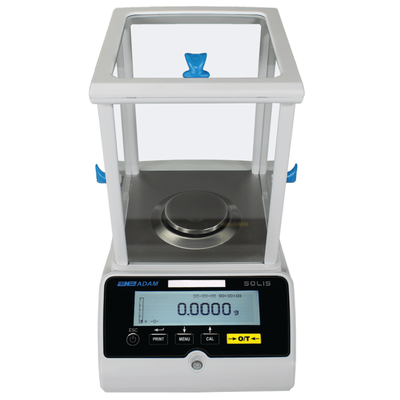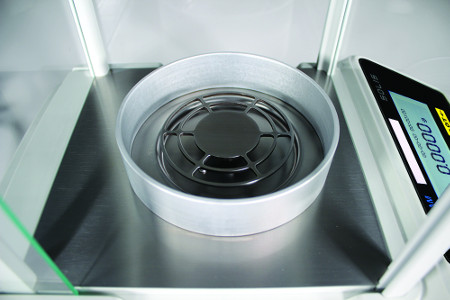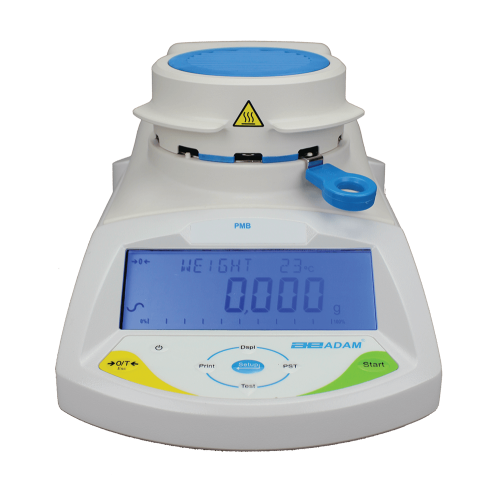
Proper treatment of wastewater is essential: it helps keep our environment safe and healthy, protects people from diseases and odors that could develop, and can help recycle water for reuse, helping lessen water scarcity. Treating wastewater is a branch of chemistry that uses a wide variety of tools. In this blog post, we’ll explain how balances and moisture analyzers are used in wastewater treatment.
Quantitative Measurements
Wastewater treatment is a type of analytical chemistry that relies on many physical properties. Balances can’t help with qualitative identification (like smell or volatility) but are needed to take quantitative measurements of mass, volume or density.
Analytical Balances for Wastewater Testing
Analytical balances are frequently used in wastewater testing to ensure the quality of samples and treatment procedures. Any formulation or testing that depends on measurements requires highly precise and accurate results. As such, it is paramount to use a reliable analytical balance and for users to be familiar with operating procedures, as even a single error can snowball and affect other tests. An analytical balance used for wastewater laboratories should have a readability of at least 0.1mg. Balances can be used to measure solid samples, reagents or to create substances that will be diluted and mixed with reagents, then dried to measure their concentration.

Anti-vibration tables are often used to stabilize the balance and create a reliable workstation where the effect of vibrations, air currents and other environmental disturbances are minimized. A dedicated workspace can help ensure proper setup to make sure readings are not affected by external factors.
How Are Analytical Balances Used in Wastewater Analysis?
There are a few types of procedures that use the mass provided by analytical balances for wastewater treatment, the most common being gravimetric, colorimetric and titration.
Gravimetric analysis determines the amount of an analyte (the substance that is measured) by comparing the masses of two compounds (one pure, one impure) that contain the ion. The mass is weighed, dissolved, mixed with a precipitating agent, heated to make filtering easier, checked, filtered, dried and weighed. Stoichiometry is then used to determine the mass of the analyte. Finally, the mass of the analyte is divided by the mass of the analyte measured in the unknown compound to determine the percentage of the mass.

Titration gradually introduces a reagent of established concentration to a sample until the analyte is consumed quantitatively. The resulting stoichiometric reaction can be used to determine the analyte. There are a few ways to measure titration. The balance is used to measure reagents and solutions, rather than the actual reaction.
Colorimetric analysis determines the concentration of a substance in a solution by using a reagent that creates a reaction that gives specific colors. Once again, rather than weighing the compounds directly, the analytical balance is used to measure the solution and reagents.
Measuring Concentration
One of the ways water quality and solutions are tested is by measuring the concentration of various compounds. The amount of the substances measured can be quantified by weight, while the solution is usually measured by volume. This means that concentration is expressed as ratio of the weight of the substance to one unit of volume of the solution. Most wastewater laboratories use milligrams per liter (mg/L). You can use the formula Concentration x Volume = Weight. This can help setting up guidelines for dilution and concentration in specific, easily auditable quantities. There is also a formula that can be used to measure the change of concentration before and after dilution: Initial Concentration x Initial Volume = Final Concentration x Final Volume.

Concentration can be expressed as normality or molarity.
Normality is a measure of concentration that equals the gram equivalent weight (the measure of the reactive capacity of a molecule) per liter in a solution. Normality can be understood as the equivalent concentration of a solution. It is represented by the letter “N” or in equivalent per liter. Because normality is dependent on an equivalence factor that changes based on the type of chemical reaction, it is not always used when measuring concentration.
Molarity (also called molar concentration) is simply the number of moles (the SI unit for the amount of a substance, symbolized by mol. A mole corresponds to the mass of a substance that contains 6.023 x 1023 particles of the substance) of solutes (the material dissolved) in one liter of solution. The units of molarity are either moles per cubic decimeter (mol dm-3) or just “M”.
How Are Moisture Analyzers Used for Wastewater Treatment?
That depends on the type of sample (fun fact: dewatered sludge is called “cake"). Some substances need to be heated past the temperatures available in moisture analyzers or in higher quantities, hence the need for special ovens or furnaces. For smaller samples and more delicate drying tasks, a moisture analyzer can be used. They are sometimes used together, with furnaces and ovens used to remove large quantities of water then the drying process gets fine-tuned with a moisture analyzer. Our PMB can generate temperatures between 50°C to 160°C in one-degree increments.

One of the advantages of moisture analyzers is that they can be used with a wide variety of drying options, which can be useful when measuring various chemicals, sludge and unstable compounds. They offer greater control over the temperatures and heating process they can even be set to allow samples to cool more quickly, as well. Moisture analyzers can also do a lot of the calculations for users, which helps prevent errors. They often include various useful features like a tare button (no need to manually subtract your dish’s weight). The PMB can store up to 49 different recipes and 99 tests results, which can be sent to computers, printers or flash drives. This can speed up routine testing procedures while maintaining consistent testing parameters across multiple types of tests.
After heating and drying a sample, always make sure it is room temperature before weighing it! Analytical balances are delicate, and results can be affected by the difference in temperature of the sample and the weighing chamber.
This is a basic overview of the role of weighing equipment in treating and processing wastewater. It’s a complex topic with many different processes and explaining them all would require a very long book. If you feel we missed anything, or if you have any questions, please contact us. We’re happy to help!

